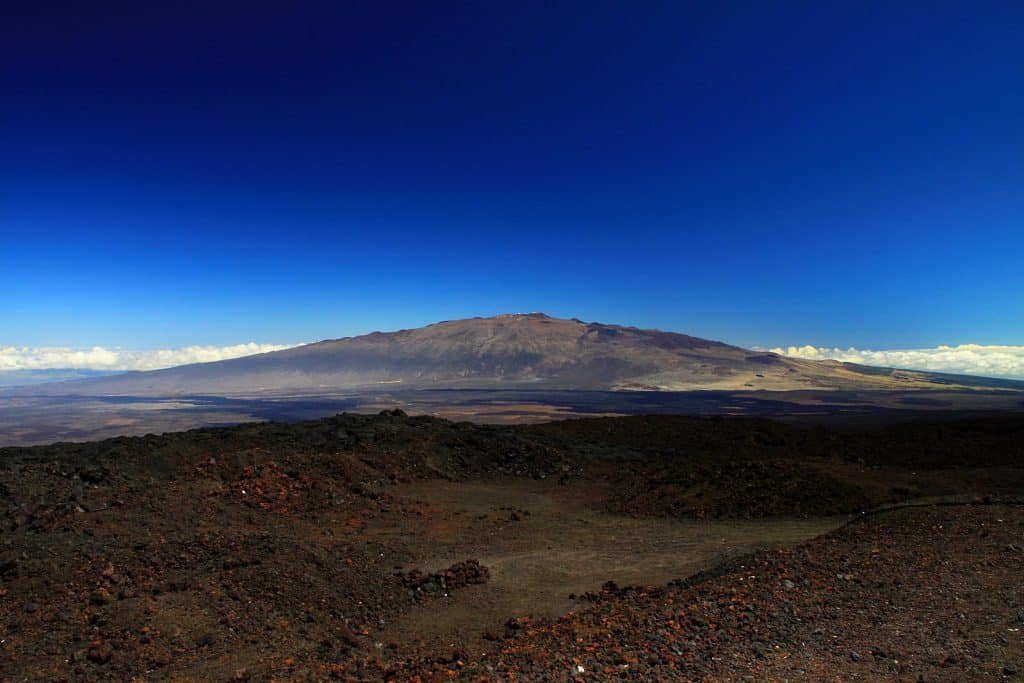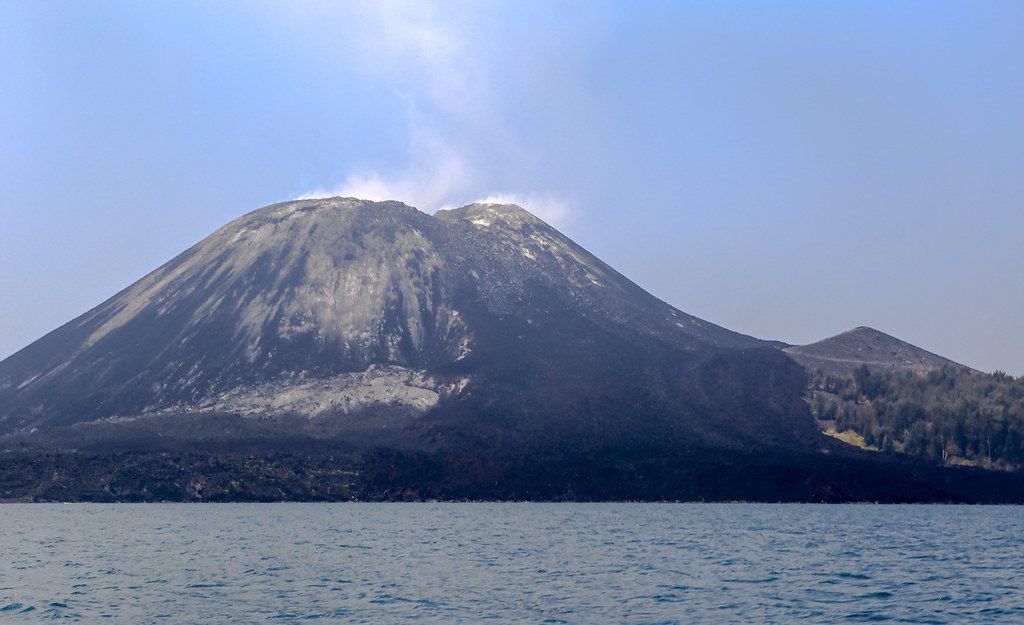
The largest and deepest body of water on Earth, the Pacific Ocean completes the list of the world’s waters. Along with the four other oceans and seven seas, it covers up to 71% of the Earth’s surface. Despite its name, the big blue ocean is full of harsh conditions. It often overflows with activity, such as birthing hurricanes, and cools our planet to habitable temperatures.
Indeed, this vast ocean basin is essential to the ecosystem of our planet. It serves as an important foundation for both marine life and land-dwellers, as well as economic pathways for governments. The Pacific Ocean borders 55 countries from different continents ranging from China, the United States, Australia, Japan, Philippines, Mexico and the Oceania region. Now, let’s dive into the vast pool of Pacific Ocean facts and learn more about our planet’s largest oceanic division.
- The Pacific Ocean was formed about 190 million years ago.
- The second-largest island, New Guinea, is found in the Pacific Ocean.
- It is also home to Easter Island, named by a Dutch explorer who discovered the island on Easter Sunday.
- Beneath the surface of the Pacific lies the Earth’s longest mountain range, the Mid-Oceanic Ridge, which stretches almost 40,000 miles.
- There are large pockets of petroleum and natural gas found beneath the continental shelves of New Zealand and Australia’s coasts.
- The Pacific harbors a number of the world’s fishes for human consumption, including tuna, sardines, herring, and shellfish.
- The Pacific Ocean shrinks by approximately 1 inch annually, while the Atlantic Ocean grows at the same rate.
- Marine pollution continues to grow every year, accumulating an increase of about a hundred times over in the last 40 years.
- Space debris from decommissioned satellites can be found in the Pacific region, with the Mars 96 a notable one; it polluted a 200-mi long stretch of water, and parts of Bolivia and Chile.
- The world’s largest basin is divided into three physiographic regions: central, eastern, and western Pacific regions.
- The Pacific Ocean varies salinity levels in accordance with latitudes. The maximum salinity level in the southeastern region is 37 ppt, while the one near the equator is 34 ppt due to higher levels of precipitation, and a 32 ppt average in the northern Pacific region.
- 80% of the Pacific’s volume, the deep zone, has a relatively constant and stable salinity and temperature patterns of around 38.3°F.
- The Atlantic and Pacific Oceans meet at the southernmost point of South America. It is located off the coast of Tierra Del Fuego.
- The famous photo where the Atlantic and the Pacific Ocean meet wherein a deep blue body of water doesn’t mix with the murky green-tinged body of water is just a myth; it’s merely glacial water that melted and mixed with sediment.
- The Galapagos Islands are home to numerous endemic species which can only be seen in this Pacific region.
- The Pacific Ocean is home to the Great Barrier Reef, the largest coral reef system on Earth, which is visible all the way from space.
- It also contains many of the world’s atolls.
- There is a phenomenon called the “warm blob,” or an abnormal hot mass of water in the Northeast Pacific Region.
- Temperatures in the Pacific vary to the extremes, from 29°F near the poles to about 86°F near the equator.
- The Pacific Ocean contains half of the world’s free water.
Ferdinand Magellan, a Portuguese explorer, named the Pacific Ocean in 1521.
During his circumnavigation of the world under the flag of Spain, Magellan sailed into a calm patch of water with favorable wind conditions and named it “Mar Pacifico,” which translates to “peaceful sea” in both Spanish and Portuguese.

The Pacific Ocean spans from the Western Coast of the United States to the coast of China.
The largest ocean basin on Earth covers an area of about 60 million sq. mi with an average depth of 13,000 ft. This amounts to 30% of our planet’s surface and holds almost twice the amount of water as the Atlantic Ocean. It borders a number of countries such as China, Russia, down to Australia, and the East Coast of the Americas.
The Pacific Ocean is home to the Great Pacific Garbage Patch.
The Great Pacific Garbage Patch is the largest collection of floating debris found on the eastern and western regions of the Pacific Ocean. One of the largest is the patch found between the coasts of Hawaii and California.
The Pacific Ocean is larger than the Earth's landmasses put together.
The largest water basin on Earth is almost 10% larger than all of the continents combined. Our planet’s land mass only equates to a total of about 58 million sq. mi.
Earth’s tallest mountain is actually located in the Pacific.
Mauna Kea is an inactive volcano in the Hawaiian region. Although the widely popular Mount Everest, which clocks in at 29,029 ft. from its base to its peak, is commonly referred to as the world’s highest landmark, it’s actually dwarfed in comparison to the Earth’s actual tallest mountain.

People think toilets flush in opposite directions in different hemispheres.
A common misconception of this phenomenon is that toilets in the Northern Hemisphere will flush in a clockwise motion, while it’s counter-clockwise in the Southern Hemisphere. Although the surface currents in the Pacific Ocean have a circular pattern, this is mostly cause by the winds deflected by the Coriolis effect. Water inside the toilet is too little to be affected by the such phenomenon, thus its location on the globe has nothing to do with how the water flushes, rather it depends on how the bowl is designed.
Humans only explored about 20 percent of the planet’s oceans.
Humans managed to explore only about 20 percent of the world’s oceans, with the Pacific holding the majority of its mystery. More than 80 percent of the vast bodies of water are still unexplored, unmapped, and unobserved. This is largely due to its size, plus the journey down is quite expensive and treacherous for most cases. The extreme condition in the depths greatly inhibits underwater explorations. We’ll have to wait and see how the advancement in technology would overcome this hurdle.
The world’s deepest trench, the Mariana Trench, is located in the Pacific Ocean.
The Mariana Trench is located 124 mi east of the Mariana Islands in the western region of the Pacific Ocean. Its maximum known depth measures roughly 36,000 ft., also known as the Challenger Deep. Along with the intense water pressure, pitch-black darkness and below 0°C temperature, life is nearly impossible to thrive down there.
The Challenger Deep, Earth's deepest point, got its name from the ship that first studied the region.
The deepest point known to man, the Challenger Deep, is located in the Western Pacific Ocean and named after the the British Royal Navy ship, HMS Challenger. It was among the first to study and record the depth of the depression during its 1872-1876 expedition.
“Titanic” Director James Cameron is the first person to reach the Challenger Deep alone.
The famous director of the “Titanic” reached the world’s deepest point on March 26, 2012, aboard a so-called “vertical torpedo.” Despite describing it as lunar and desolate place, he surprisingly found garbage such as plastic bags and wrappers.

There are more artifacts in the Pacific Ocean than in most museums combined.
The Pacific Ocean houses a large number of historical artifacts and remnants of history than most museums. The vast water basin is home to numerous shipwrecks, airplanes, and even remnants from various space missions.
There is an area known as the “Spacecraft Cemetery” located in the Pacific Ocean.
Located in the southern region of the Pacific Ocean just east of New Zealand, the large area known as a spacecraft cemetery is formally called the South Pacific Ocean Uninhabited Area. Most spacecraft and man-made space debris fall into this region at the end of their life cycle after being strategically decommissioned and de-orbited.
Researchers believe that Aviation pioneer Amelia Earhart crashed in the Pacific Ocean.
While on their way to Howland Island in the Central Pacific Ocean, Amelia and her companion, navigator Fred Noonan, likely ran out of fuel and had no other choice but to crash, as seen on the final report. At that time, investigators declared both as legally dead as a result of drowning, their bodies never recovered.
More than half of the world’s source of oxygen comes from the ocean.
Scientific studies show that about 50-80 percent of the world’s oxygen comes from oceanic planktons. One notable organism, the Prochlorococcus, produces around 20 percent of the oxygen found in our entire biosphere. This is more than what all tropical rainforests can do even when combined.

The Ring of Fire contains the most active volcanoes and lies beneath the world’s largest basin.
Most volcanoes are underwater including The Ring of Fire which lies beneath the surface of the Pacific Ocean. It forms a horseshoe-shaped belt called the Circum-Pacific Belt. It stretches up to 25,000 miles long and 310 miles wide, and contains 75 percent of the world’s active volcanoes.
The volcanic island of Krakatoa is located in the Pacific Ocean.
Located between the islands of Java and Sumatra along the Pacific Ring of Fire, Krakatoa erupted in 1833. One of the deadliest and most destructive eruptions in recorded history, it destroyed 70% of the island and surrounding archipelago. The aftermath caused a large mass of earth and rock to collapse and form a caldera.

Most islands on the planet are found in the Pacific Ocean.
The Pacific Ocean is home to roughly 25,000 islands, the most in the world. The numbers dip well into 20,000, which highly depends on the tides and seismic activity.
Point Nemo is the farthest point from land.
Found in the Pacific Ocean, this very remote region on Earth is 1,670 mi away from the nearest landmass. The Jules Verne novel, “Twenty Thousand Leagues Under the Sea,” served as an inspiration for naming the region.
The Pacific Ocean is home to the “White Shark Café.”
This remote region in the mid-Pacific is actually home to great white sharks loitering during winter and spring. Contrary to initial findings, it seems to teem with wildlife to feed the hungry shark population. Researchers from Stanford University’s Hopkins Marine Station gave the region its quirky name. In their studies, a large population of great white sharks inhabits the area during the 6-month period every year.
The Pacific Ocean houses massive underwater rivers.
Large underwater rivers, also known as “undersea rivers,” can be found beneath the surface of the Pacific Ocean. These rivers rival the likes of the Colorado River, known to carve out the world-famous Grand Canyon. Scientists believe such rivers carved out the Monterey Canyon off the coast of California.
Was this page helpful?
Our commitment to delivering trustworthy and engaging content is at the heart of what we do. Each fact on our site is contributed by real users like you, bringing a wealth of diverse insights and information. To ensure the highest standards of accuracy and reliability, our dedicated editors meticulously review each submission. This process guarantees that the facts we share are not only fascinating but also credible. Trust in our commitment to quality and authenticity as you explore and learn with us.
